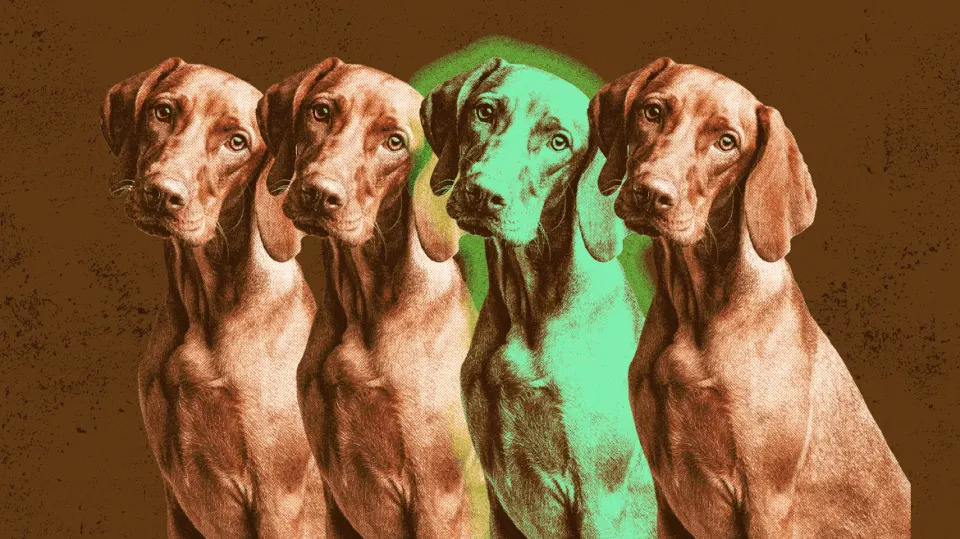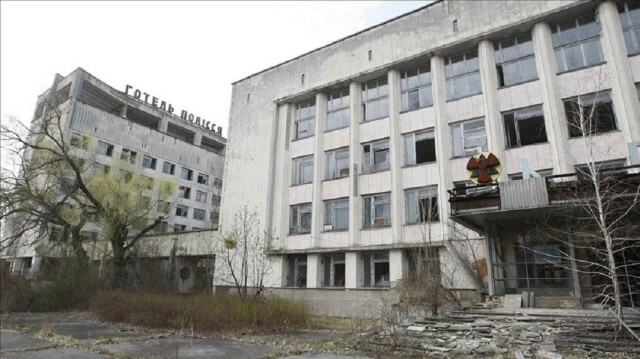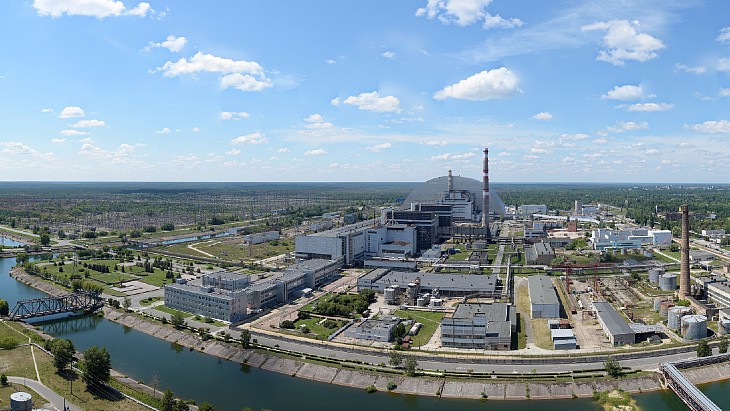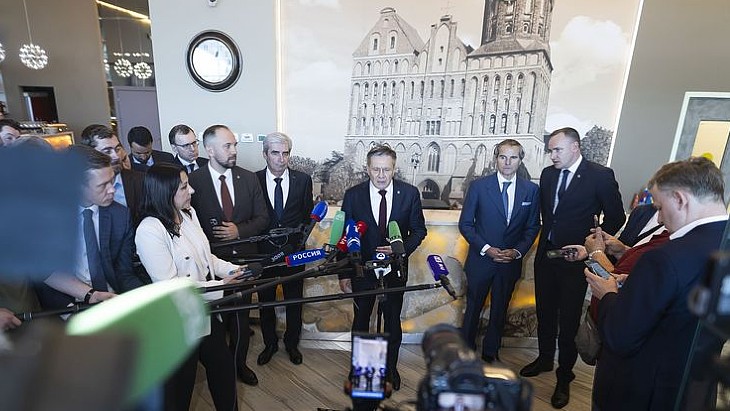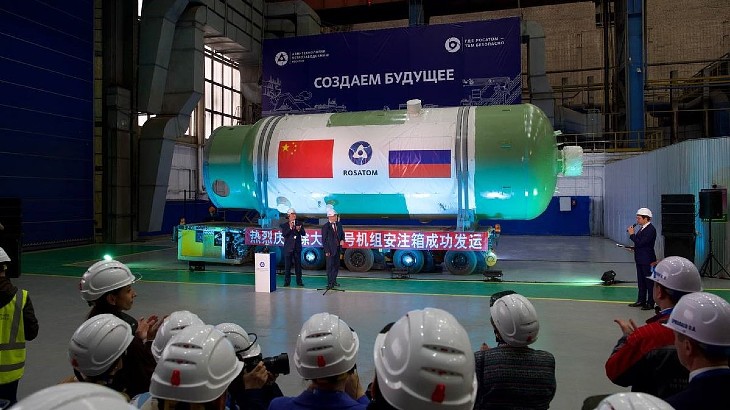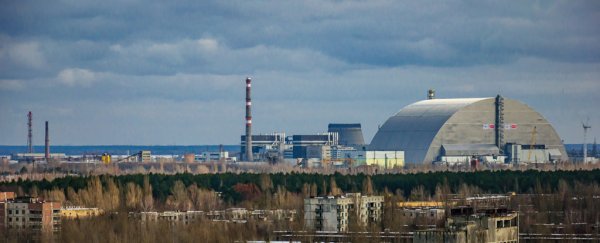
Chernobyl's Radiation Spiked 20 Times Above Usual Levels as Russian Forces Arrive
BEN TURNER, LIVE SCIENCE
25 FEBRUARY 2022
The Chernobyl nuclear power plant and its surrounding area are showing increased radiation levels after heavy fighting between Ukrainian and Russian troops in the region, Ukrainian officials said Friday (Feb. 25)
Online data from the Chernobyl exclusion zone's automated radiation-monitoring system shows that gamma radiation has increased 20 times above usual levels at multiple observation points, which officials from the Ukrainian nuclear agency attributed to radioactive dust thrown up by the movement of heavy military equipment in the area.
The defunct Chernobyl nuclear power plant has been under occupation by attacking Russian soldiers since Thursday (Feb. 24) after Russian president Vladimir Putin launched a full-scale invasion of Ukraine in the early hours of the morning.
Workers at the facility, stationed there to monitor and maintain radiation levels within safe bounds, have been taken hostage by Russian troops, according to Anna Kovalenko, a Ukrainian military expert.
"The station staff is being held hostage. This threatens the security of not only Ukraine but also a significant part of Europe," Kovalenko wrote on Facebook.
White House press secretary Jen Psaki said in a news briefing on Thursday (Feb. 24) that the Biden administration was "outraged" by reports of Russian troops holding Chernobyl plant staff against their will and demanded their release.
She warned that the action "could upend the routine civil service efforts required to maintain and protect the nuclear waste facilities."
As one of the most radioactive places in the world, large parts of the Chernobyl exclusion zone have been closed off since the disastrous meltdown of Ukraine's Chernobyl nuclear power plant in 1986.
In that year, two enormous explosions inside the plant's reactor flipped its 2,000-ton (1,800 metric tons) lid like a coin, blanketing the surrounding 1,000-square-mile (2,600 square kilometers) with radioactive dust and reactor chunks.
Following evacuation and the dousing of the nuclear fire – which cost many firefighters their lives – the reactor was sealed off and the area deemed uninhabitable by humans for the next 24,000 years.
Heavy fighting around the plant on Thursday (Feb. 24) led to concerns that stray munitions could accidentally pierce the exploded reactor's two layers of protection – consisting of a new, outer safe-confinement structure and an inner concrete sarcophagus – and release the deadly radioactive fallout trapped inside.
In a contradictory statement, Igor Konashenkov, the spokesman for the Russian Defense Ministry, said that radiation around the plant was within normal levels and that Russian forces were working with the facilities' staff to ensure the area's safety.
Oleksiy Arestovych, an advisor to Ukrainian president Volodymyr Zelenskyy, believes that the Chernobyl site was seized as part of a "possible blackmail" tactic against the West.
"Chernobyl has been seized and I think they will blackmail the West. The President's Office is preparing a response to possible blackmail through Chernobyl," Arestovych said in a statement.
The site, which is just 60 miles (97 km) north of the Ukrainian capital Kyiv, lies on a direct invasion route between Kyiv and the Russian forces' northern entry point to Ukraine at the Belarusian border.
Claire Corkhill, a professor of nuclear material degradation at the University of Sheffield in the UK, wrote on Twitter that the gamma radiation around the Chernoybl plant "looks to have increased by around 20 times compared with a few days ago."
However, caution should be taken "not to over-interpret at this stage," she said.
"This appears to be based on a single data point," Corkhill added in a separate tweet. "What is intriguing is that the level of radiation has increased mostly around the main routes in and out of the Chernobyl exclusion zone, as well as the reactor. This would tend to suggest that increased movement of people or vehicles may have disturbed radioactive dust."
The highly radioactive fuel inside the Chernobyl reactor is buried deep beneath the defunct plant and is unlikely to be released unless the reactor is directly targeted, Corkhill said.
Fighting around the plant was just a small part of a much wider ongoing Russian invasion of Ukraine, the biggest on a European nation since World War II.
As Russian forces close in on Kyiv, the Ukrainian Ministry of Defense wrote on its Twitter page, urging citizens to stay at home, inform the Ukrainian military about the movements of Russian military equipment, and make Molotov cocktails in preparation for urban warfare.
Related content:
Images: Chernobyl, frozen in time
10 times HBO's 'Chernobyl' got the science wrong
Chernobyl nuclear disaster 25 years later (Infographic)
This article was originally published by Live Science. Read the original article here.
Graeme Massie and Zoe Tidman
Fri, February 25, 2022
It is the site of the world’s worst nuclear disaster, and now Ukrainian officials say that the area surrounding the Chernobyl nuclear reactor is under Russian control.
The reactor at Chernobyl infamously melted down in April 1986 during a test, covering much of Europe in a radioactive cloud.
At that time, Ukraine remained a part of the Soviet Union, and to this day a highly protected 20-mile exclusion zone had existed around the site, which entombs a highly dangerous amount of nuclear material.
So why would Vladimir Putin have prioritised it for capture and control by his advancing troops?
Tracey German, a professor in conflict and security at the King’s Russia Institute, told The Independent this could be down to the site’s location.
“It lies on a direct route from Belarus down to Kyiv and would therefore be passed by Russian forces invading from the north,” she said. “If it wasn’t in this location, I don’t think Russian forces would be looking to secure it.”
The defunct nuclear site is situated in northern Ukraine just several miles inside the border and around 80 miles north of the embattled country’s capital.
“Chernobyl is the shortest route from Russia to Kyiv. The facility is not the goal,” tweeted CNN analyst and national security expert Juliette Kayyem.
Ukraine observers also say that Chernobyl sits on the western side of the Pripyat river, which merges with the Dneiper river just north of Kiev. The site therefore becomes strategically important for the western flank of Russian troops if they eventually circle the city.
Dr Ross Peel, a researcher at the Department of War Studies at King’s College London’s also suggested the threat posed by war could also play a role.
“I’d suggest the main motivation is they want to get the site secured. It’s not generating power at all and has no value that I can think of – I think the main motivation is they want to keep it safe from anything that might breach it,” he told The Independent.
“Prolonged fighting in the area only creates danger of the containment being breached and radiation escaping, so they want to prevent anything happening to it.”
But Ukraine’s nuclear agency and interior ministry said on Friday they were recording increased radiation levels from the site of the defunct nuclear power plant.
Experts at the state nuclear agency said the change was due to the movement of heavy military equipment in the area lifting radioactive dust into the air.
“It is not critical for Kyiv for the time being, but we are monitoring,” the interior ministry said.
Other observers have said that Russia wanted to gain control of the Chernobyl power substation, which provides energy to Belarus and parts of western Russia.
Shane Partlow, who used to work at the US embassy in Kyiv, said this could be the purpose of holding the Chernobyl area, as the substation was “critical to electrical supply in the region, including Belarus and Russia”.
Kelsey Vlamis
Thu, February 24, 2022

Ukrainian servicemen take part in a joint tactical and special
Russian forces took over the Chernobyl nuclear plant in Ukraine on Thursday.
Press secretary Jen Psaki called reports the plant's staff was taken hostage "incredibly alarming."
It's unclear how the Russian takeover will affect efforts to maintain radioactivity at the site.
Press secretary Jen Psaki said the White House is outraged over reports from Ukrainian officials that staff at the Chernobyl nuclear plant in Ukraine have been taken hostage by Russian troops.
Russian forces took over the remnants of Chernobyl earlier on Thursday during the country's invasion of Ukraine. The move indicated Russia is likely to assault Ukraine's capital city, Kyiv, which is located just south of Chernobyl, the site of one of the worst nuclear disasters in history.
"We're outraged by credible reports that Russian soldiers are currently holding the staff of the Chernobyl facility hostage," Psaki said during a press briefing on Thursday afternoon, adding "we condemn it and we request their release."
Psaki said the situation at Chernobyl was not clear but that the hostage taking was "incredibly alarming and greatly concerning," adding it could hurt efforts to maintain the facility, which is dangerously contaminated with radioactivity as a result of the 1986 nuclear disaster.
Earlier on Thursday, an adviser to the head of the plant said: "After a fierce battle, Ukrainian control over the Chernobyl site was lost. The condition of the former Chernobyl nuclear power plant, confinement, and nuclear waste storage facilities is unknown."
Russia's takeover sparked concerns that it would jeopardize the decades-long efforts to contain the nuclear disaster, including a billion-dollar investment in a containment dome in 2016. It's unclear how the dome would hold up to combat damage, Insider's Brent D. Griffiths reported.






